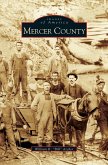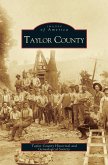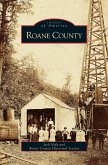Located in the heart of Appalachia, rural Barbour County is bound on the east by the Allegheny Mountains, and on the west by the rolling hills that lead to the Ohio River. The Tygart River and its tributaries flow to the north through Barbour County, and historic maps identify the county as "the Western Waters." Once a trackless forest used as hunting grounds by Native Americans, the county was permanently settled in the late 1700s and officially named in 1843 for Philip Pendleton Barbour, a philanthropist and member of the U.S. Supreme Court. Known also for its focus on health care, the county may best be known as the site of the first land battle of the Civil War in 1861 and for the double-barreled bridge that played a role in that event. Over the years, the hardy members of this region have carved their living out of the mountains--mining and timber have helped sustain the county's communities. Recorded for generations to come in documents and other visual memorabilia, the singular history of Barbour County abounds with individual stories of industry, courage, determination, and faith.








